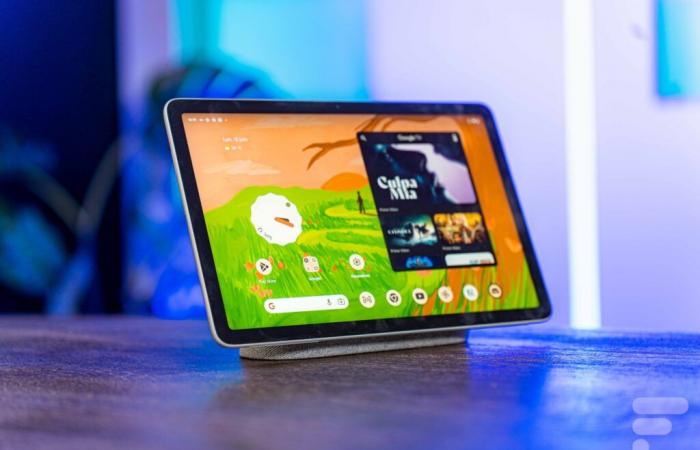Google's Pixel tablet could welcome a change that could well boost your productivity from 2027. Here's everything we know.
According to confidential documents from Google's gChips division, revealed by Android Authority, the next generation of the tablet will benefit from significant hardware improvements geared towards productivity. Android Authority there is definitely no end to Google's future plans, the media having already lifted the veil on the Pixel 10 and 11, but also on Android 16.
The most notable element of this future tablet, which should be the Pixel Tablet 3, will be the integration ofun second port USB-C. This new port, compliant with USB 3.2 standardwill allow connecting to external displays via DisplayPortwith the ability to manage up to two screens in a chain. A choice which ultimately fits perfectly into Google's strategy aimed at transforming its tablet into a real mobile working tool.
The Pixel Tablet 3 will accommodate a second USB-C port
At the heart of this development is the Tensor G6 processor, which will debut on Pixel smartphones in 2026 before equipping the tablet the following year. This processor will integrate a specific USB-C controller for “ tablet use case », suggesting extensive optimization for this format.
However, Google does not intend to abandon the features that made the first Pixel Tablet successful. Pogo pins powered by USB 2.0, used for the docking station with speaker, will be retained. Google therefore seems to want to maintain the innovative concept of a smart home hub.
This hardware evolution will be accompanied by a major software update: a desktop mode currently in development for Android. This new interface, combined with external display capabilities, could transform the Pixel Tablet into a real alternative to laptops for certain uses.
Google's approach seems to be inspired by that of Apple with the iPad and its Smart Connector, while offering its own vision of mobile productivity. However, with a release planned in three years, these specifications remain likely to evolve considerably before the final product is marketed.






